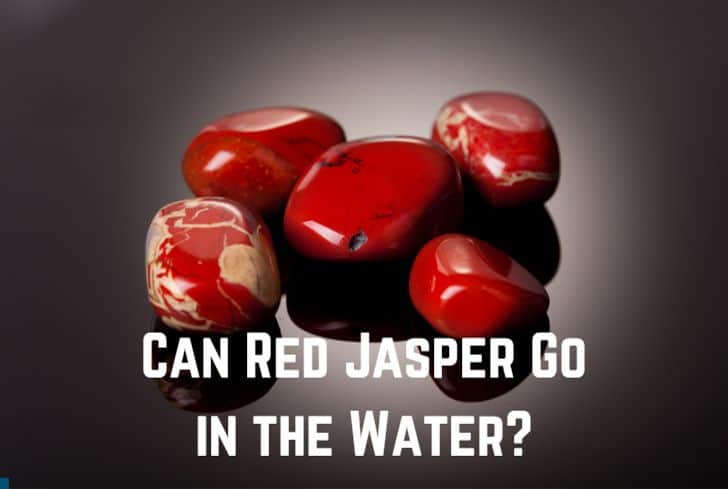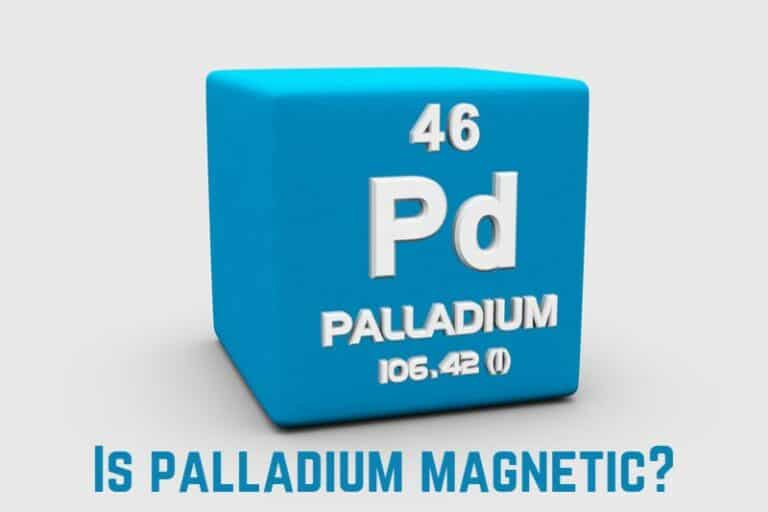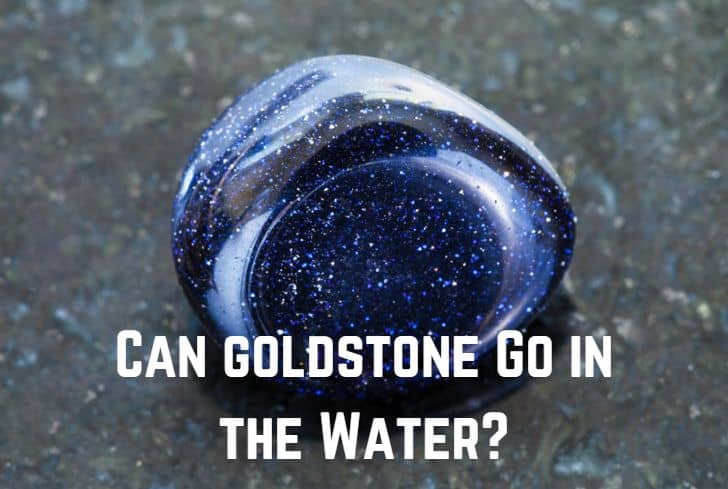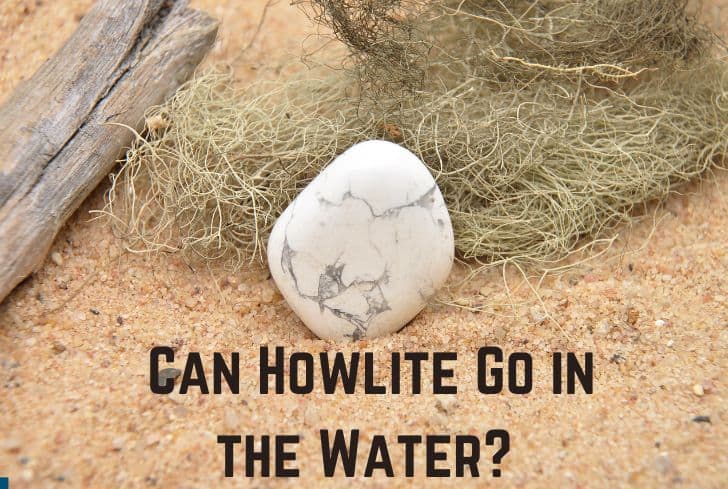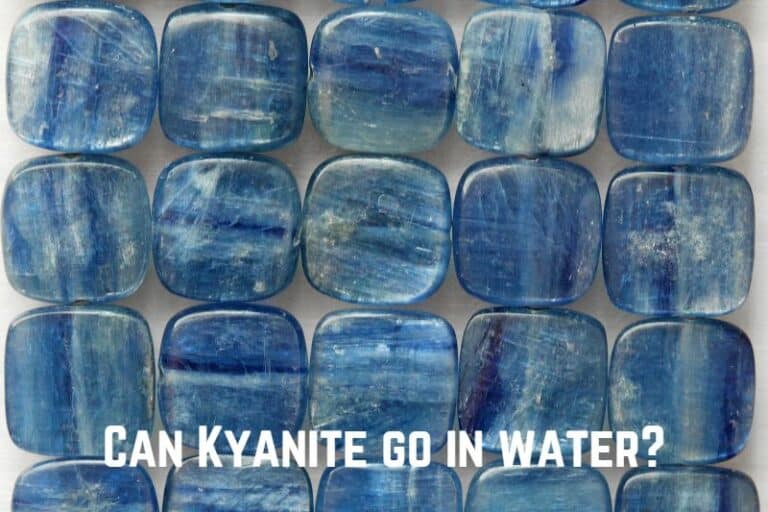Can Moonstone go in the Water? (And Salt Water, Sunlight?)
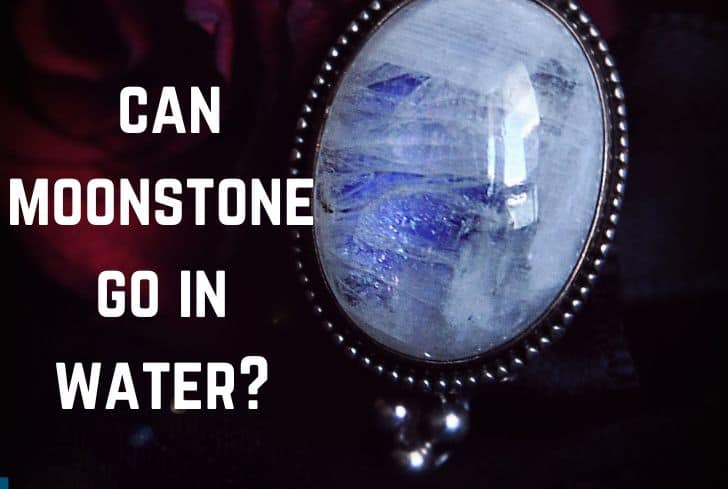
Moonstone is a gemstone of the orthoclase feldspar group. It exhibits a unique visual effect known as adularescence, which produces a milky, bluish light inside the stone—hence the name moonstone. Because of its gorgeous glimmer, moonstone is a popular choice for jewelry.
Have you ever wondered “can Moonstone go in the water? In this article, we are going to discuss that by looking at the properties of Moonstone. Then we will discuss its interaction with salt and sunlight. Finally, we will talk about ensuring authenticity and taking care of moonstones.
Can Moonstone Get Wet?
Yes, Moonstone can get wet. It has a hardness of 6-6.5, meaning that it can survive underwater. However, like in the case of all stones, it should not be immersed for too long. Water can enter the tiny crevices of the stone and widen them, thus damaging the stone.
Mohs Hardness Scale is a measure of the relative resistance of minerals to scratching. Besides resistance to scratching, the scale also helps us understand a mineral’s relationship to water. A value of 5 or above on the scale means that the mineral can survive underwater.
The value of Moonstone on the scale is just above the minimum threshold. It is not a very hard stone and requires caution in use. Keep reading to find out how to clean and care for the stone properly.
Can Rainbow Moonstone go in the Water?
Yes, rainbow Moonstone can go in the water. Rainbow moonstone is technically a variety of labradorite, not moonstone, and it has a hardness of 6-6.5 on the Mohs Scale. So, it can survive underwater, but it should not be immersed for too long.
Labradorite is a plagioclase feldspar. It has thin layers of albite, which produce a blue or white schiller effect. In rare cases, a multi-colored (blue with green or orange) schiller effect is displayed, known as labradorescence. This stone is technically labradorite, not moonstone, but the name “rainbow moonstone” has become accepted in the trading world.
In any case, neither labradorite nor moonstone should be immersed in water for too long. Water can enter their tiny crevices, widening them and damaging the stone. Water can also dull the surface colour of the stone, which is an important determinant of its price.
Can Moonstone go in Salt Water?
No, it is not recommended to put Moonstone into saltwater. With a hardness of 6-6.7 on the Mohs scale, moonstone is safe underwater, but even then, it should not be immersed for too long. When salt is introduced, it just makes things worse since salt water is much more damaging than regular water.
Water can get into the crevices of the stone and widen them. This becomes worse when we are dealing with salt water. Even after the water evaporates, the salt particles remain, and this will lead to the expansion of fissures.
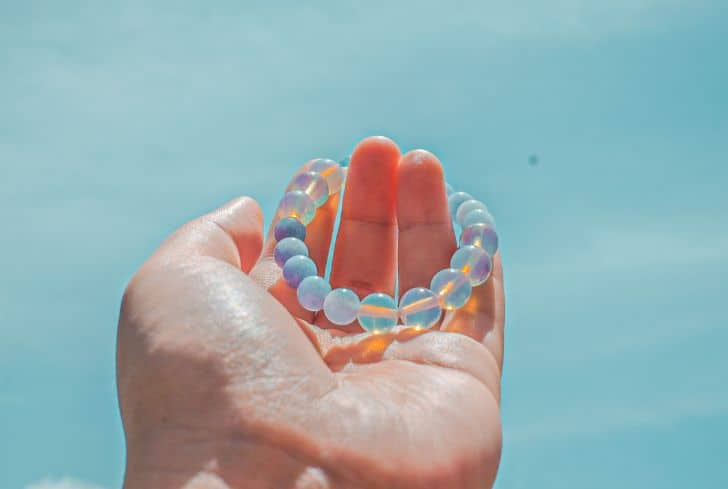
Can Peach Moonstone go in the Water?
Yes, peach Moonstone can go in the water. It is a variety of moonstone that is brown or light pink/peach in color. It has a hardness of 6-6.5 on the Mohs Scale, meaning that it can survive in water. But it should not be left for a long duration, as water has the potential to enter the crevices and damage the stone.
Peach moonstone comes mostly out of Madagascar. It has higher contents of aluminum in its chemical make-up, which is why its color is brown. Since its hardness is greater than the minimum value of 5, required for minerals to be safe in the water, you can put it in water for a limited amount of time.
Below, we will discuss how to clean Moonstone in detail.
Can Moonstone go in Sunlight?
Yes, Moonstone can certainly be put in sunlight. Moonstone has a hardness of 6-6.5 on the Mohs scale, so it can resist sunlight. Recharging stones in sunlight is a popular practice, but, as in all cases, they should not be left out for too long. Harsh sunlight can fade or tarnish their surface.
It’s fine to keep the stone out in sunlight for a couple of hours. Longer durations might dull or damage the stone. You can also try keeping the stone behind a window, as the glass will protect it will from UV rays.
Morning hours, when sunlight is gentle, are the best for recharging the stone. As the name suggests, you can also recharge Moonstone in the moonlight. Other methods include burying it, placing it on dry salt, etc.
Can You Shower With Moonstone?
Yes, you can shower with a Moonstone. It has a value of 6-6.5 on the Mohs Scale, which is greater than the value (5.0) required for minerals to survive water. However, it should be kept in mind that its hardness is just above the minimum threshold, so it is always better to take it off during physical activities.
Water from the shower will not hurt the moonstone, but there is a chance that your jewelry might slip off and fall on the ground. Since it’s not very strong, it can be damaged by this.
A value of 6-6.5 on the Mohs scale is not too high, and moonstone is often prone to chipping. So you must always try to protect it from hard knocks. This is why it is best to take it off during physical activities like exercising, swimming, etc.
Can You Clean Moonstone in Water?
Yes, you can clean Moonstone in water. Given its hardness of 6-6.5 on the Mohs scale, it is perfectly safe underwater. It is important to take into consideration this property, as our cleaning technique will depend on it. Follow these steps to clean your moonstone:
- Mix a mild dish detergent with water. You can also use a gentle, non-acidic jewelry cleaner.
- Soak the moonstone in solution for about 3-5 minutes.
- Rinse it under running water to wash off any excess soap.
- Remove the stone and dry it with a soft cloth.
- Remember to roll the stone while drying to ensure all water is removed from the crevices.
You should never use ultrasonic or steam cleaners for Moonstone, as they can damage it. Moonstone’s unearthly radiance is what makes it so special but without proper steps, it can lose its gleam. So, not only must you follow the right steps for cleaning, but the stone also needs care in everyday use.
Moonstone is a rather fragile stone. So, when you are cleaning, lifting heavy items, or doing intense physical activities, it is best to take Moonstone off. Physical knocks or chemicals from housecleaning products can easily damage your gemstone.
When you are not wearing it, warp your moonstone in a soft cloth. If you keep it in a jewelry box, make sure it is not rubbing against other stones, as they can scratch its surface. If your gemstone has visible scratches, you can get it repolished by a jeweller to bring back its lustre.
How do I Know if my Moonstone is Real?
Due to its wonderful glimmer effect, moonstone is a highly prized stone in the world of jewelry. However, dishonest sellers might try to pass off stones as Moonstone, which is why it is essential to check a stone’s authenticity. These are the points you need to consider:
- Adularescence: Moonstone is known for its unique schiller effect that is caused by light diffraction through layers of orthoclast and albite in the stone. When you place Moonstone under bright light, you should see a blue or white glow. If you don’t, then you might be dealing with a fake stone.
- Temperature: Like most real stones, Moonstone should be cold to the touch. If the stone feels warm against your skin, it might be fake.
- Bubbles: Fake gemstones made up of glass tend to have glass bubbles within them. This is because, during the manufacturing process, gas gets trapped in the stones. So, while observing the gemstone, if you see bubbles in it, it is probably not real moonstone.
Besides these, you should check the authenticity of the seller. Reading customer reviews is the easiest and most reliable way of doing this.
You should also consider the price of the Moonstone, and see if it fits the industry standards. If a price looks too good to be true, it often is. Here are the factors that determine a moonstone’s price:
- Colour: Moonstones with a glassy look and blue shimmer are the costliest.
- Clarity: Stones with greater transparency cost more.
- Cut: Shapes that best emphasize adularescence are prized more.
- Weight: The size of the stone is another determinant of the price.
Conclusion
In this article, we have discussed whether Moonstone can go in the water or not. Since its hardness is 6-6.5 on the Mohs scale, above the required value of 5, it will be safe underwater. However, it should not be immersed for too long. We looked at its interaction with sunlight and salt water. We also talked about determining its authenticity and caring for the stone.

